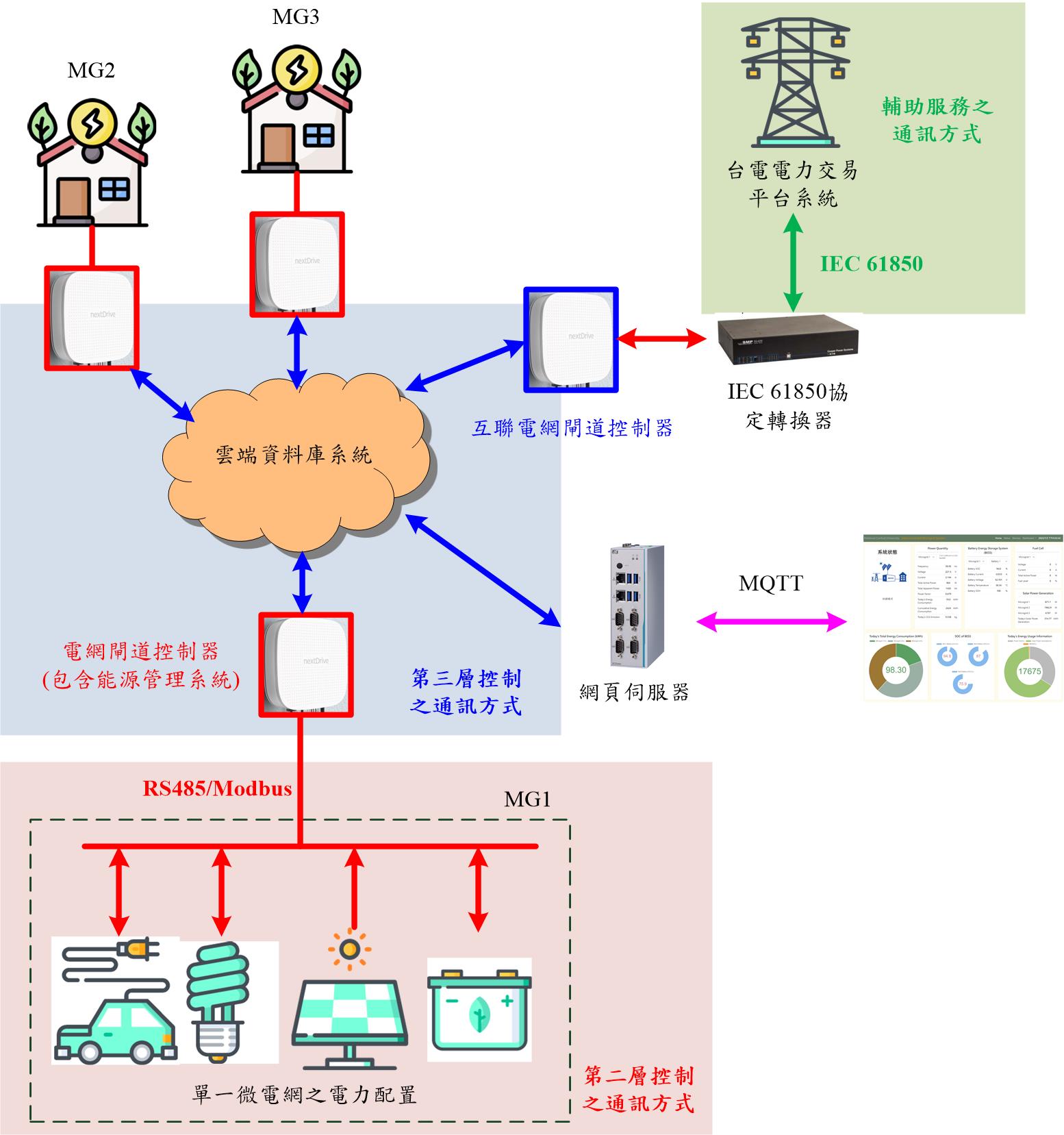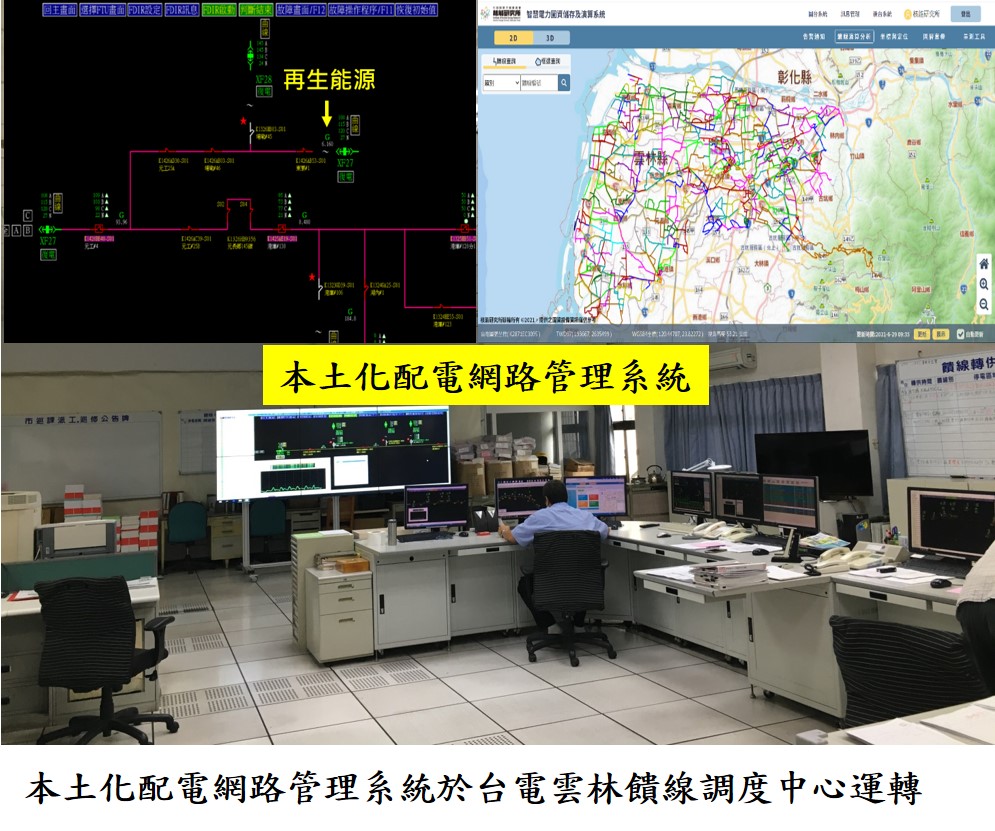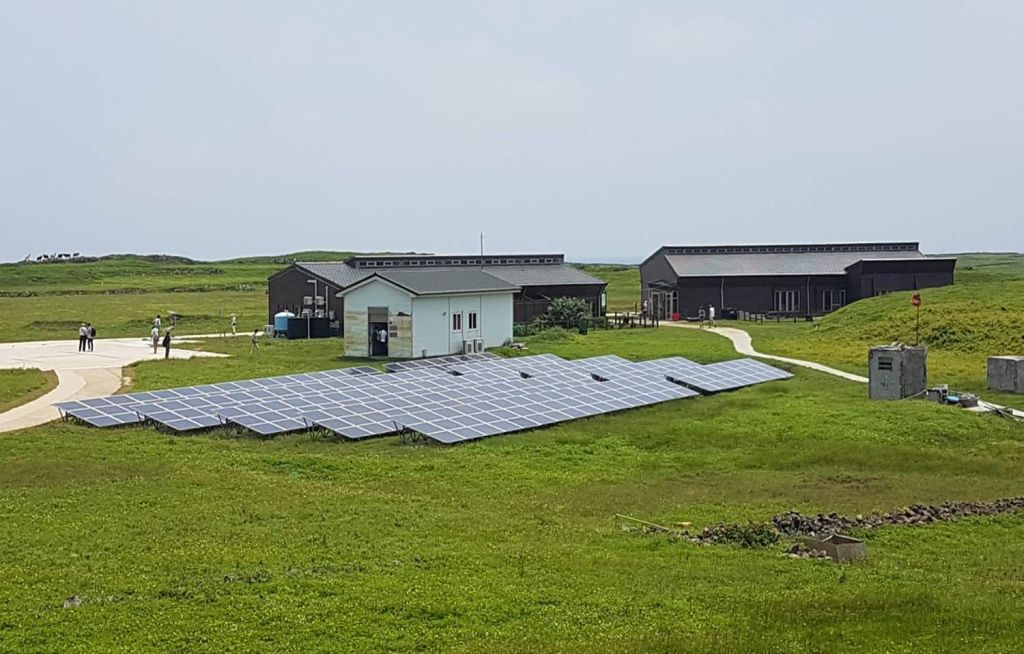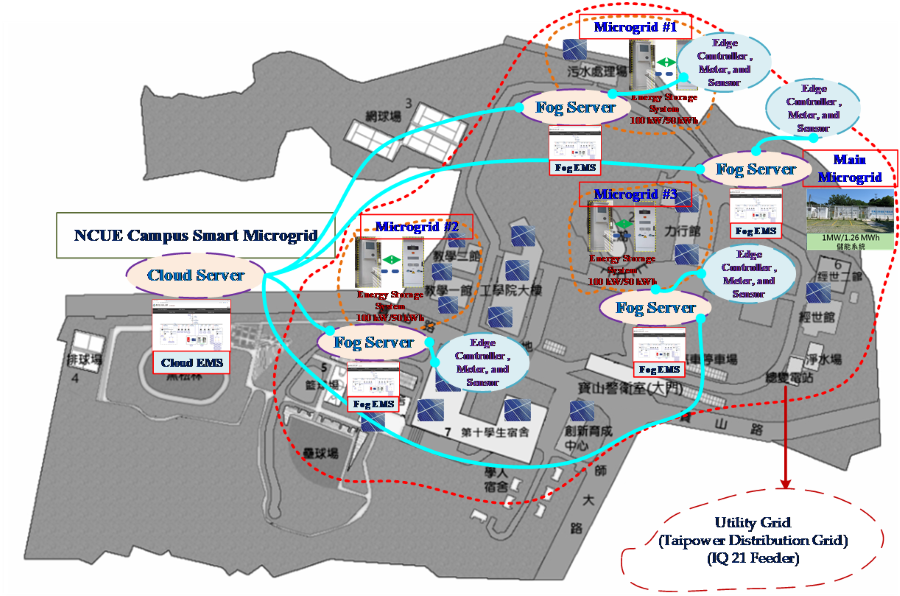| Technical Name | Hierarchical Energy Management System for Multi-Microgrid | ||
|---|---|---|---|
| Project Operator | National Changhua University of Education | ||
| Project Host | 黃維澤 | ||
| Summary | The intelligent operation of multi-microgrid relies on the construction of an energy management system based on edge, fogcloud-based hierarchical informationcommunication system architecture. This system includes photovoltaicload demand forecasting, seamless transition between grid-tiedislanding operation mode, V2G/G2V of electric vehicle, power flow calculation, as well as reinforcement learningheuristic algorithms apply to day-ahead schedulinghour-ahead optimal dispatching. Therefore, each microgrid can operate autonomouslyin coordination,to reduce peak load, power loss,improve energy efficiency in the entire system. |
||
| Scientific Breakthrough | 1. Integrate the 1-km high-resolution weather forecastthe cloud cover data derived from the satellite Sunflower 8 with ultra-high temporal resolution every 10 minutes to improve the accuracy of PV power generation forecasting. 2. Complete the development of multiple microgrid EMS with edge, fog endcloud hierarchical information communication system architecture. 3. Distrribution autonomous frequency synchronization control andmult-microgrid topology Changes. 4. Develop RL-A3Cheuristic algorithm for the practical application of day-ahead schedulinghour-ahead dispatching of multi-microgrid, which can reduce system peak load by 28.8 |
||
| Industrial Applicability | This technique can be applied to multi-microgrid formed by building microgrids,even expand to distribution networks in front of the point of common coupling to form a new operation mode of networked microgrids. In response to the near-zero carbon emission target of the 2050 National Development Council, the proposed related technologies can directly apply to the large power consumers to build a hierarchical multi-microgrid energy management system, photovoltaic generation prediction, load forecasting, seamless transition between grid-tiedislanding,intelligent schedulingdispatching to improve the energy efficiency of regional power grids. |
||
| Keyword | Micro-grid Energy Management System Hierarchical Structure Day-Ahead Schedule Hour-Ahead Diapatch Generation Prediction Battery Energy Storage System Grid-Tied Operation Islanding Operation | ||
- Contact
- Liang-Rui Chen
- lrchen@cc.ncue.edu.tw
other people also saw







